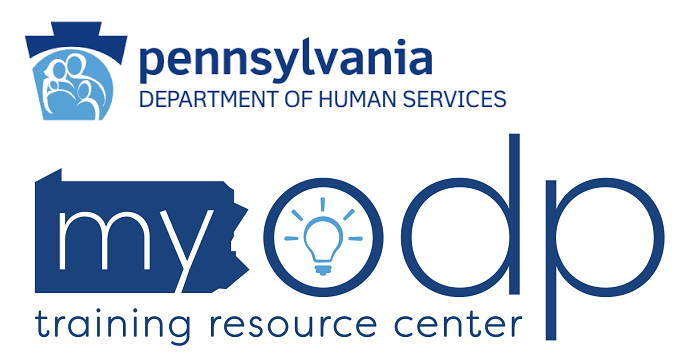Positive Approaches Journal, Volume 9, Issue 1
Hooven | 55-61

Volume 9 ► Issue 1 ► 2020
Interactions with Law Enforcement and Individuals with Autism
Kate Hooven
Abstract
The Center for Disease Control reported in March,2020 that the rates of autism have increased from 1 in 59 to 1 in 54. With the rates continuing to rise, so too will the interactions of individuals with autism and law enforcement. The circumstances and the outcomes of these incidents will vary, but, one thing will remain constant, the need for training and education for both the law enforcement community and individuals with autism in order to increase safety and more positive outcomes. Here is one mother and her teenage son’s story.
I saw the police car discreetly tucked under a tree on a country road. I knew without even looking at my speedometer that I was going to meet the officer sitting in that police car in person, and soon. Sure enough, within a few moments I was proven right. I saw the officer’s car pull out from under the tree. My eyes kept darting from the road in front of me to my rearview mirror, knowing full well what was coming behind me was almost as important as what lay ahead. Then, the lights, the siren, and perhaps a word or two one shouldn’t say in front of their kids.
Taking a deep breath to calm myself, I pasted on a smile and said, “Hey kids, I think mom is about to get a speeding ticket.” There were the expected shrieks of, “What?” and “Are you going to go to jail?” along with the shaking fear that many of us exhibit when those red and blue lights pull up behind us. I tried to calm my children’s fears by letting them know that I was not going to jail, and that mommy may have been going a little over the speed limit and that at most I would get a citation, a speeding ticket.
As I glided my car to the side of the road, I assured my 16-year-old son teenage son sitting next to me that it would be fine, but, he did not look as though he believed me. In fact, I don’t think my son heard a word I said because he had already gone into complete shut-down mode. My son has autism. This kind of disruption, this kind of interaction with law enforcement was certainly not part of his normal routine and if there is one thing my son craves, it is routine. He was terrified.
After I provided the police officer with my license and registration, the officer tried to joke with the kids about their law-breaking mother. A nervous giggle escaped from my daughter seated in the back of the car, but, my son, seated in the passenger seat, sat stone still, face down staring at the floor mats with no response. My son acted as if he hadn’t heard the officer when the officer directed a question at my son. He did not acknowledge the officer, he did not smile, he did not take his eyes off the car floor mats. I know full well had I not been there to say, “My son has autism and he is really, really nervous right now” that simple speeding citation could have ended much differently.
Although verbal, in that moment of such heightened anxiety, my son was unable to form the words, “I have autism.” My son does not carry any kind of autism identifier he could have shown police; however, he does wear an autism awareness bracelet. But, prior to this incident, we did not discuss what to do and what not to do, if stopped by the police. If I had not been there to advocate for my son, his autistic behavior to an untrained police officer may have looked like non-compliance. My son’s lack of eye contact could have led that officer to believe that my son was lying or keeping something from him. Worst yet, had the lights and sirens overwhelmed my sensory sensitive son to the point his sensory system could no longer handle such an onslaught of stimuli, he might have jumped out of the car and ran to escape those sensations which could have had dire consequences.
None of that happened because I was there to advocate for my son, who, as I mentioned, is completely verbal but unable to communicate in times of stress. My son’s inability to communicate his autism diagnosis to the police officer is not unique to him. Many individuals with autism have communication deficits or communicate in a different manner, a manner many of our law enforcement officers are unaware of if they have not been properly trained. This leaves both the individual with autism and the officer at a disadvantage that could have negative outcomes for both.
For example, had I not been present and able to advocate for my son, a trained police officer may have recognized my son’s silence and his lack of eye contact as signs of autism. Subsequently, the officer could have asked, “Do you have autism?” And although my son may not have been able to verbally say, “yes,” he could have nodded his head which would have given the officer the information he needed to move forward safely. My son and I have since had multiple discussions on what my son should have done and what he will need to do if there is a next time. One of the first things my son will do if there is a next time, is point to his autism awareness bracelet if he is unable to form the words, “I have autism.”
This was one incident, for one individual with autism, but we continue to hear about similar stories on the news and in other media outlets that these type of incidents are occurring with more regularity and sometimes the outcome is positive, but sometimes it is not. The one variable that seems to make a difference in these types of interactions and ensuing outcomes with law enforcement and individuals with autism, is awareness and training. How can we expect our law enforcement officers to understand and respect our individuals with autism, if we don’t educate law enforcement on the various ways individuals with autism communicate, the types of behaviors they may witness, or provide the officers with tools and strategies on how to safely interact with individuals with autism? And equally as important, our individuals with autism need to understand how to safely interact with law enforcement by learning what to do and what not to do if stopped by police.
For five years, Pennsylvania’s ASERT (Autism Services, Education, Resources and Training) has been providing training to justice system personnel, as well as training for individuals with autism. The positive response and the effectiveness of the training is evident from the stories we are hearing from both law enforcement, as well as, family members of individuals with autism. Four days following an ASERT autism training, two police officers were called to a home where a young man with autism was struggling with escalating behaviors. The mother alerted the 911 operator that her son had autism and “would probably need restrained.” Upon approaching the home, the police officers turned off their lights and siren and contacted the EMS Team who was responding and suggested they do the same. Once they entered the home, the officers asked the mother what her son’s interests were, what his sensitivities were and how he communicated. Thanks to the officers’ understanding of autism following ASERT’s training, the young man was able to walk unassisted to the police car and was taken to a local hospital without incident.
In trainings designed for individuals with autism and their family members, an ASERT team member and a local police officer spend an hour explaining the importance of following the laws, the role of a police officer and the do’s and don’ts if stopped by police, as well as, sharing valuable resources such as Social Stories ™ to enable our individuals with autism to be better prepared if they come into contact with law enforcement. These type of trainings not only benefit the audience member, but they also make the local officer who participates more aware as he/she is able to interact with these individuals with autism when they are not in a crisis situation which is invaluable. ASERT has provided in-person training to over 8,000 law enforcement and first responders as well as 1,400 participants in virtual trainings. The trainings are free and can be tailored for time and content, depending on the needs of the audience. All trainings are comprised of three content areas; clinical overview of Autism Spectrum Disorder including core deficits and symptoms, Statewide Data from the Pennsylvania Autism Census and the Statewide Survey of Justice System Professionals and how to practically apply information learned to everyday job duties. The training can be completed in person or virtually.
We cannot expect our law enforcement community to know the signs of autism and how to safely interact with individuals with autism if we don’t provide them with the information and the tools and strategies to do so. The same holds true for our individuals with autism. They must learn what to do and what not to do if stopped by police in order to keep them safe. The education and the awareness go both ways.
As
a mother, my greatest job is to love and protect my kids. I taught them about
stranger danger, how to cross the road safely and what to do in case of a fire,
but, until the day I got that speeding ticket and saw my then 16-year-old son
with autism completely shut down, I never had a discussion on what to do if
stopped by police. It is my job to keep my kids safe. It is my job to PLAN
(Prepare, Learn, Advise and Notify) for my kids’ safety, all of my kids,
regardless of age or ability. By educating law enforcement, educating the
community, and educating individuals with autism, we increase the odds that
every time my son walks out our front door, he will come back through that
front door safer, understood and accepted.




